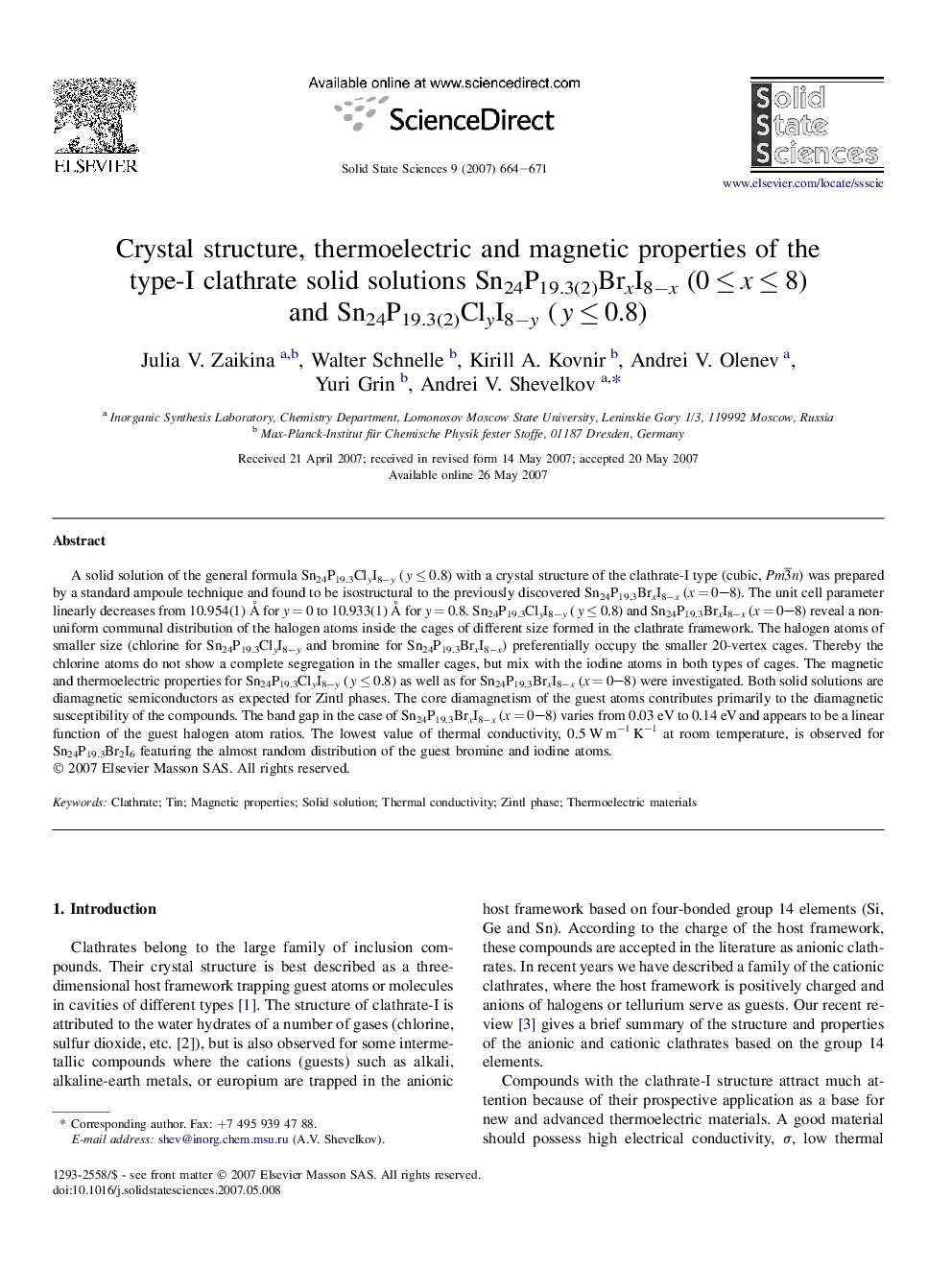| Article ID | Journal | Published Year | Pages | File Type |
|---|---|---|---|---|
| 1507079 | Solid State Sciences | 2007 | 8 Pages |
A solid solution of the general formula Sn24P19.3ClyI8−y (y ≤ 0.8) with a crystal structure of the clathrate-I type (cubic, Pm3¯n) was prepared by a standard ampoule technique and found to be isostructural to the previously discovered Sn24P19.3BrxI8−x (x = 0–8). The unit cell parameter linearly decreases from 10.954(1) Å for y = 0 to 10.933(1) Å for y = 0.8. Sn24P19.3ClyI8−y (y ≤ 0.8) and Sn24P19.3BrxI8−x (x = 0–8) reveal a non-uniform communal distribution of the halogen atoms inside the cages of different size formed in the clathrate framework. The halogen atoms of smaller size (chlorine for Sn24P19.3ClyI8−y and bromine for Sn24P19.3BrxI8−x) preferentially occupy the smaller 20-vertex cages. Thereby the chlorine atoms do not show a complete segregation in the smaller cages, but mix with the iodine atoms in both types of cages. The magnetic and thermoelectric properties for Sn24P19.3ClyI8−y (y ≤ 0.8) as well as for Sn24P19.3BrxI8−x (x = 0–8) were investigated. Both solid solutions are diamagnetic semiconductors as expected for Zintl phases. The core diamagnetism of the guest atoms contributes primarily to the diamagnetic susceptibility of the compounds. The band gap in the case of Sn24P19.3BrxI8−x (x = 0–8) varies from 0.03 eV to 0.14 eV and appears to be a linear function of the guest halogen atom ratios. The lowest value of thermal conductivity, 0.5 W m−1 K−1 at room temperature, is observed for Sn24P19.3Br2I6 featuring the almost random distribution of the guest bromine and iodine atoms.
Graphical abstractFigure optionsDownload full-size imageDownload as PowerPoint slide
